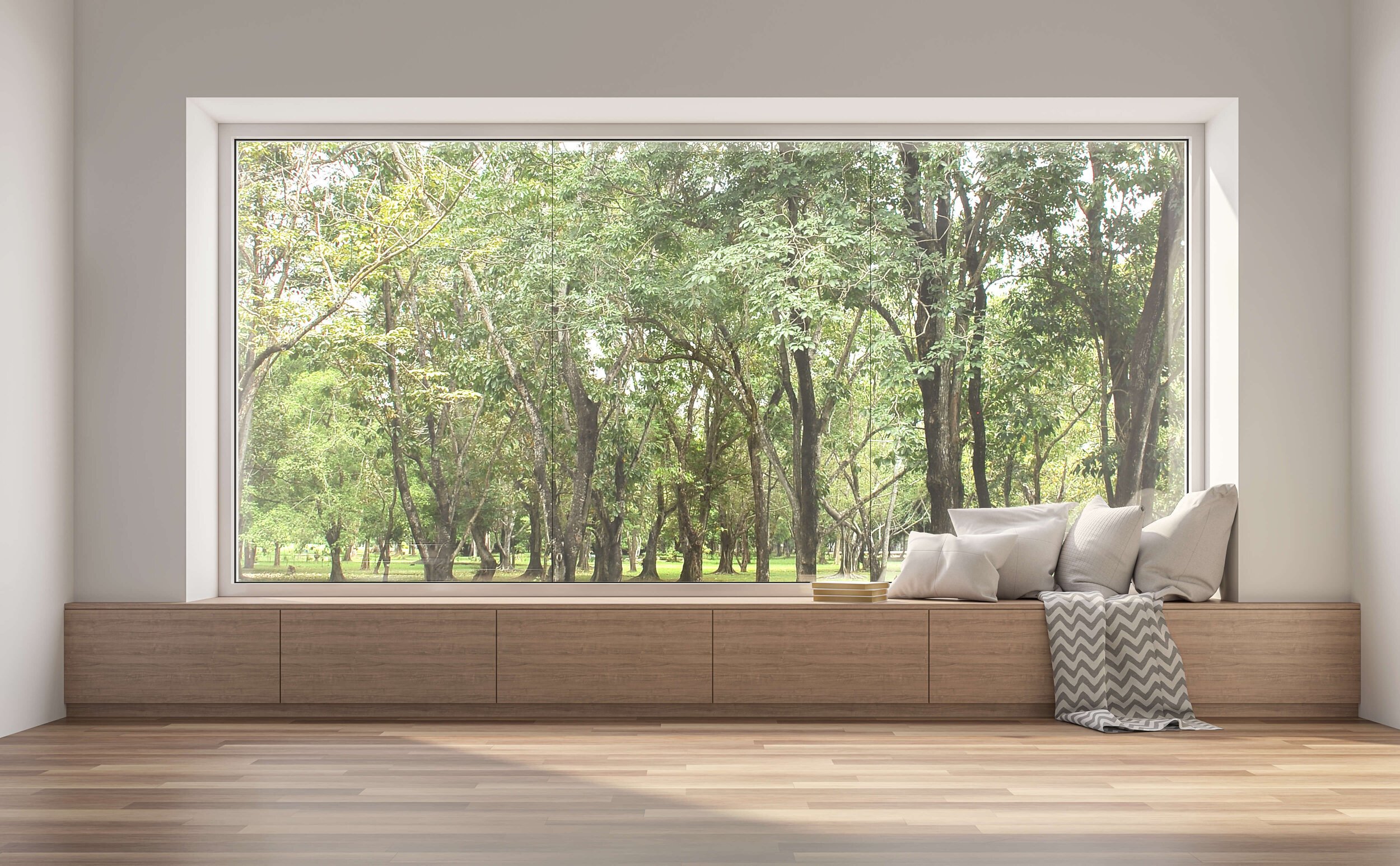What defines a modern window?
You’ll find the term modern window (as well as modern door) in the marketing materials of almost any window & door manufacturer out there. But even though it is widely used, it is almost never defined. In this blog post, we’ll give you an overview of the relevant areas of innovation in the window and door market and explain how these innovations translate into modern windows and doors.
What are areas of innovation in the window and door market?
You may be saying to yourself, “A window is a window, right? How much innovation can there be in the window and door market?” Quite a lot, actually. The fields of innovation are numerous, and we’ve listed below the most important categories contributing to the improvement of windows and doors:
Materials
The materials used for the frames have a significant impact on structural integrity, thermal performance, security, durability, longevity, and price of windows and doors. In this field, there’s neither a new contender nor an old champion who wins it all. Different materials have different advantages and disadvantages.
Steel is hard to beat in terms of its structural integrity, thin sight lines, and durability, but its high heat conductivity makes it much harder to design window and door profiles with an excellent thermal performance. PVC, on the other hand, has a much lower conductivity, but is neither as sturdy nor as durable as steel.
Due to these diverse material properties, innovations in this field are more about targeted solutions for certain requirements rather than winning it all. For example, fiberglass is a fairly new material used in the space and it outperforms vinyl in many areas including warping, but is also more expensive and less easy to process.
Profile Design & Seals
Thermally broken Aluminum window profile with multiple rubber seals.
The design of profiles and their seals is the most obvious area of window and door innovation. It’s also the most complex area, given that everything from materials science engineering to fabrication capabilities impact the final product. At the same time, innovation can mean very different things depending on the market and customer preferences.
Today, from a visual perspective, slim face widths are sought after by the majority of US clients. At the same time, increased energy efficiency targets call for window profiles with improved thermal breaks and added seals. As a result of these two trends, manufacturers are designing profiles that have narrow face width but with added depth to leave sufficient room for thermal breaks and additional seals.
Glazing
Window glazing is its own science. If you want to get into the details of it, please check out our dedicated blog post. For the purpose of this article, it’s sufficient to know that window glazing is used to allow innovation with regard to thermal performance, security (break resistance), and visual light transmittance.
By stacking up two or three layers of glazing panes and insulating gas and sealing them into one package (creating the so-called double or triple glazing), the thermal performance of the window can be improved dramatically. Tempering the individual glazing panes adds break resistance. Applying coatings to the individual glazing panes can add to the thermal performance and change the visual light transmittance.
Innovative glazing combines all these aspects into a product that is tailored to the climate zone-specific requirements of the respective window market while using the most effective coatings and manufacturing techniques.
Hardware & Operation
Window hardware is both a consequence and an enabler of innovative window operation designs. For example, due to their different operation, tilt and turn windows require completely different hardware than double hung windows. The hardware allows the window vent to be open in very different ways, enabling the window to operate with less wear and tear on the window seals and better seal performance.
But even for the same kind of window, hardware can be used to create innovation by providing better durability and security and easier operation. For example, the same tilt and turn window can have between 3 and 9 locking points depending on the hardware that is used, offering added value for security focused clients.
Coatings, Foils, & Paints
Using colored foil on window profiles adds color choices but impacts durability and thermal efficiency as well.
The coatings, foils, and paints that can be applied directly to the surface of the window profiles offer innovation with regard to visual properties (for example color and light reflection), durability (for example UV-light resistance / reduced bleaching), and thermal efficiency (for example solar heat absorption).
Innovative coatings, foils, and paints cater to the taste preferences of the respective market, while providing the best possible performance. For example, innovative window foils are available in dark colors that don’t bleach even under intense and long UV exposure as it might occur in the Southern USA.
What is a modern window?
In our view, a modern window combines innovations from all areas into a product that caters to the current visual consumer preferences, while exceeding (or at least meeting) the performance of older products. While this might seem like a no-brainer, the last piece of the sentence really makes a difference. Here’s an example:
As we’ve already mentioned, a large portion of the market currently prefers windows and doors with thin face widths. They are perceived as an integral element of modern architectural designs. As a result, the market is flooded with products that deliver on thin face widths.
However, quite a few of these new window profile designs deliver this feature at a cost. Older, bulkier designs are just slimed down without redesigning thermal breaks, seals, or depths of the profile. As a result, these new products actually perform worse than their predecessors from thermal and structural standpoints.
Window colors are another example. Black window profiles are more and more sought after, even in the Southern US. Without material innovation, however, these products will bleach much more quickly than white or lighter color alternatives, structurally degrade due to heat build up, and ultimately reduce the longevity of the newer product.
Combining modern aesthetics with the window and door innovations we’ve discussed ensures that you not only get the modern look but also the performance, functionality, and durability that you would expect from a modern product.
About Bauwerk Building Solutions
Bauwerk is a multinational business that connects US clients to an extensive network of European manufacturers of windows, doors, curtain wall systems, and more. We specialize in innovative and refined building products of the highest quality. Our offices are located in Charlotte, NC and Berlin, Germany.




